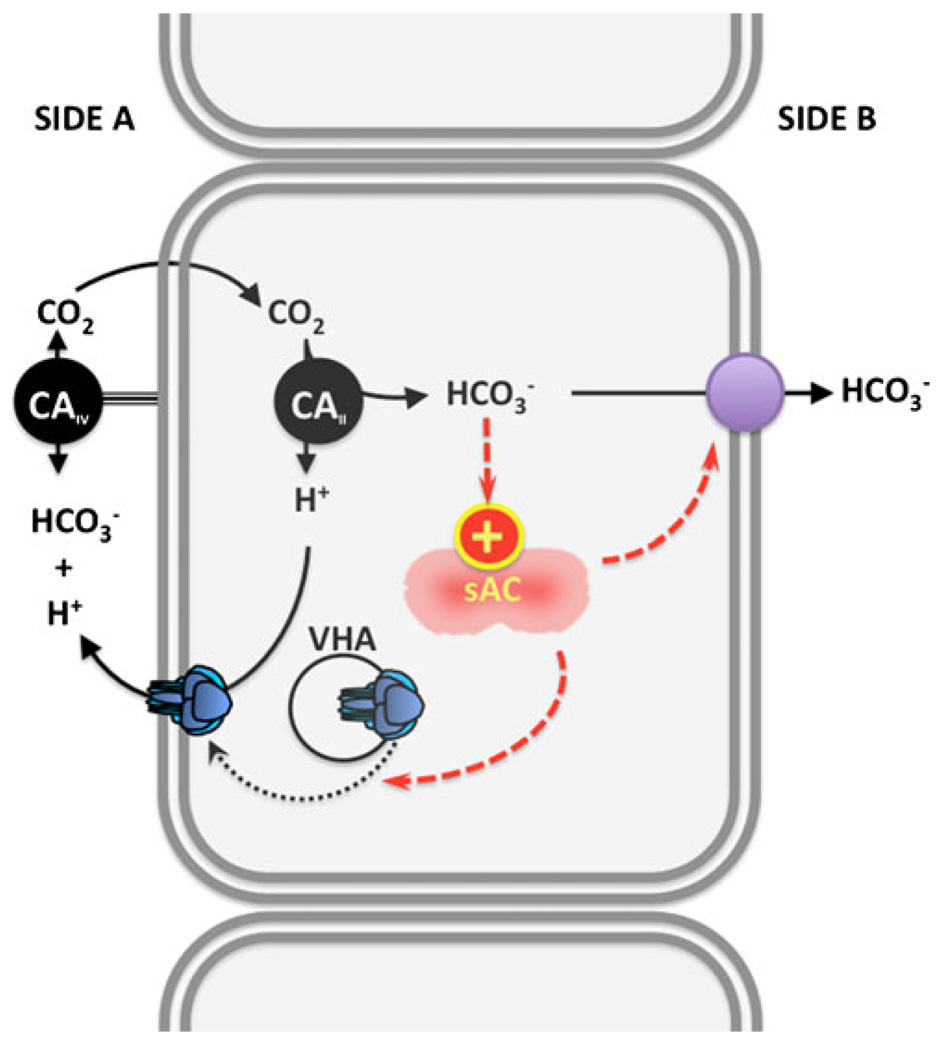Fig. 4.
Sensing and regulation of systemic pH and acid/base status by carbonic anhydrase (CA), sAC, and vacuolar proton pump (VHA). Alkalosis due to elevated extracellular HCO3− and/or pH results in elevated extracellular CO2, a reaction catalyzed by extracellular CAIV. CO2 diffuses inside the cell, where it is hydrated into H+ and HCO3−. sAC is activated by intracellular HCO3− to produce cAMP, which promotes (via PKA) the insertion of VHA-containing vesicles into the cell membrane facing the alkalosis. Membrane-inserted VHAs secrete H+, which counteract the alkalosis. sAC may also modulate the activity of HCO3− transporters in the opposite membrane. In the clear cells of the epididymis and in A-type renal intercalated cells, Side A is the apical (mucosal) side and Side B is the basolateral (serosal) side. The polarity is reversed in base-secreting cells of the shark gill and in B-type renal intercalated cells

